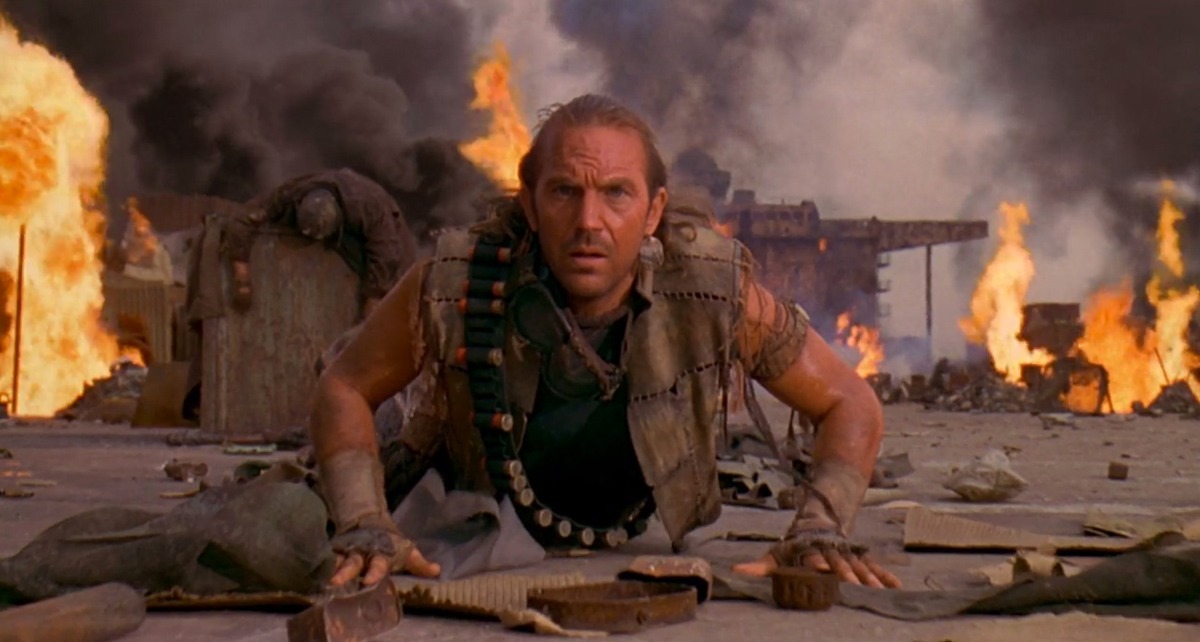Waterworld (1995)

Released in 1995, Waterworld is a quintessential example of a high-stakes, action-packed post-apocalyptic film that has garnered both fascination and critique over the years. Directed by Kevin Reynolds and scripted by Peter Rader and David Twohy, the film represents a bold cinematic venture into a future ravaged by climate change. With Kevin Costner in the lead role and also serving as a producer alongside Charles Gordon and John Davis, Waterworld presents a sprawling narrative that explores themes of survival, environmental catastrophe, and human resilience.
The film is set in a dystopian future where polar ice caps have melted, submerging most of Earth’s landmass under a vast, unending ocean. This premise provides a dramatic backdrop for the film’s action and adventure, as humanity’s struggle for survival takes center stage. The plot follows the protagonist, known only as the Mariner (played by Kevin Costner), a solitary drifter who navigates the endless waters on a makeshift catamaran. His life takes a turn when he encounters a woman named Helen and a young girl, Enola, who possess a map to the mythical “Dryland”—a legendary place rumored to be the last remaining piece of habitable land.
One of the film’s most striking aspects is its ambitious scope and scale. The production of Waterworld was famously one of the most expensive in film history at the time, with a budget exceeding $175 million. This substantial investment is evident in the film’s elaborate set pieces and impressive water-based stunts. The movie was largely shot on water tanks and specially constructed floating platforms, which presented significant logistical challenges but also allowed for a visually captivating portrayal of a water-covered world.
The central conflict of the film revolves around the pursuit of the Dryland map by the villainous Smokers, a gang of marauders led by the fearsome Deacon (played by Dennis Hopper). The Smokers, who live on a floating oil rig, represent the ruthless and anarchic forces that threaten the fragile hope for a better future. The Mariner’s struggle against these antagonists not only drives the plot but also serves as a metaphor for the broader fight between hope and despair in a world that has lost its balance.

Kevin Costner’s portrayal of the Mariner is both rugged and introspective, capturing the character’s complex mix of survival instincts and underlying humanity. The Mariner is depicted as a reluctant hero who gradually reveals his own vulnerabilities and moral code. His journey from isolation to embracing a protective role for Helen and Enola is central to the film’s emotional core. Costner’s performance, combined with the film’s stunning visual effects and action sequences, contributes to a compelling narrative that explores themes of redemption and hope amidst chaos.

Despite its grand ambitions and high production values, Waterworld received mixed reviews upon release. Critics praised its innovative visuals and action sequences but criticized its pacing and storytelling. The film’s initial reception was marred by its reputation for being an over-budget, troubled production, which overshadowed its achievements in world-building and special effects.
In retrospect, Waterworld has gained a certain cult status, and its environmental themes have become increasingly relevant as discussions about climate change and ecological sustainability continue to intensify. The film serves as a cautionary tale about the consequences of environmental neglect and the lengths to which humanity might go to ensure its survival.

In conclusion, Waterworld remains a notable entry in the post-apocalyptic genre, distinguished by its ambitious scope, impressive visual effects, and action-packed narrative. While it may not have achieved universal acclaim, it stands as a testament to the era’s fascination with dystopian futures and environmental themes. The film’s enduring legacy lies in its bold vision of a world transformed by disaster and the enduring human spirit that seeks to navigate and overcome it.











